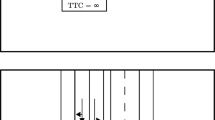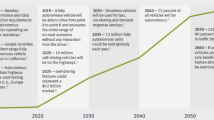Abstract
This paper describes methods and the obtained results for objective evaluation of software architectures in the automotive embedded domain. Software architecture is the key factor for influencing and fulfilling non-functional requirements that are addressed to a software system. Among others scalability, extensibility and portability are to be mentioned as major criteria. Until today however there is no approach that allows evaluating and measuring the quality of such software architectures objectively and quantitatively. The approach described here tries to close this gap and offers software architects methods and tools to be applied automatically to any existing architecture draft measuring an objective ‘quality value’.
Initially a quality model is developed which consists of several quality characteristics and quality attributes which are highly adapted and specialized to the specific needs of the automotive embedded software domain. After the identification of relevant quality attributes eight objective architecture metrics are developed and presented.
The whole methodology is fully integrable into existing development processes. The suggested steps and artifacts can be added as optional upgrade. For a better understanding of the surrounding environment the current development process and necessary extensions are also explained.
All metrics have been implemented in a fully functioning prototypical tool which can be operated via a graphical user interface (GUI) on any Java compliant system without further requirements. The user can freely configure which metrics shall be applied and how they are weighted to do an individual evaluation according to the software’s specific needs or requirements.
To prove its benefit for automotive applications and long-term establishment in the software development process the approach is evaluated. This is done in two consecutive steps. Firstly the general functioning and applicability is approved by using the metrics for several small case studies which also helped getting to know the metrics better in detail to create an initial balancing and weighting. Secondly the approach was applied to a complex and real practical example out of the driver assistance domain. The whole longitudinal dynamics software architecture of BMW’s driver assistance systems was refactored using the metrics to monitor the success and keep up a goal-oriented, iterative and incremental procedure.
Similar content being viewed by others
References
Abowd G, Bass L, Clements P, Kazman R, Northrop L, Zaremski A (1996) Recommended best industrial practice for software architecture evaluation. Technical report, Georgia Institute of Technology, Carnegie Mellon University, Software Engineering Institute
Ahrens D, Frey A, Pfeiffer A, Bertram T (2009) Entwicklung einer leistungsfähigen Darstellung für komplexe Funktions- und Softwarearchitekturen im Bereich Fahrerassistenz. In: Mechatronik 2009. VDI-Verlag, Düsseldorf
Ahrens D, Frey A, Pfeiffer A, Bertram T (2010) Designing reusable and scalable software architectures for automotive embedded systems in driver assistance. In: SAE world congress, No. 2010-01-0942. SAE
Ahrens D, Frey A, Pfeiffer A, Bertram T (2010) Restructuring and optimization of software architectures for longitudinal driver assistance systems. In: FISITA world automotive congress, No. F2010-C-121. FISITA
Ahrens D, Pfeiffer A, Bertram T (2008) Comparison of ASCET and UML—preparations for an abstract software architecture. In: Forum on specification and design languages (FDL), Stuttgart, Germany. ECSI
AUTOSAR Development Partnership (2010) AUTOSAR—AUTomotive Open System ARchitecture. http://www.autosar.org
Babar MA, Zhu L, Jeffery R (2004) A framework for classifying and comparing software architecture evaluation. In: Software engineering conference proceedings. IEEE Comput Soc, Los Alamitos, pp 309–318
Baldwin CY, Clark KB (1999) Design rules: the power of modularity, vol 1. MIT Press, Cambridge
Bass L, Clements P, Kazman R (2003) Software architecture in practice, vol 2. Addison-Wesley, Reading
Bengtsson P-O (1998) Towards maintainability metrics on software architecture: an adaptation of object-oriented metrics. In: First nordic workshop on software architecture (NOSA’98), pp 87–91, Ronneby. University of Karlskrona/Ronneby, Department of Computer Science and Business Administration
Bengtsson P-O, Bosch J (1998) Scenario-based software architecture reengineering. In: Proceedings of the 5th international conference on software reuse. IEEE Comp Soc, Los Alamitos, pp 308–317
Boehm BW, Brown JR, Kaspar H, Lipow M, MacLeod GJ, Merrit MJ (1978) Characteristics of software quality
Bosch J (2000) Design and use of software architectures. Addison-Wesley, Reading
Bosch J, Bengtsson P-O (2001) Assessing optimal software architecture maintainability. In: Bengtsson P (ed) Proc fifth European conference on software maintenance and reengineering, pp 168–175
Bundesministerium des Inneren, Koordinierungs- und Beratungsstelle der Bundesregierung für Informationstechnik in der Bundesverwaltung (1997). V-Modell Entwicklungsstandard für IT-Systeme des Bundes
Clements P, Bachmann F, Bass L, Garlan D, Ivers J, Little R, Nord R, Stafford J (2005) Documenting software architectures. Addison-Wesley, Boston
Clements P, Kazman R, Klein M (2002) Evaluating software architectures. Addison-Wesley, Reading
Eclipse open source software development environment. http://www.eclipse.org
ETAS GmbH. Ascet SD/SE. http://www.etas.com
Florentz B (2007) Inside architecture evaluation: analysis and representation of optimization potential. In: Sixth working IEEE/IFIP conference on software architecture (WICSA’07). IEEE Comput Soc, Los Alamitos, p 3
Florentz B, Huhn M (2006) Embedded systems architecture: evaluation and analysis. In: Quality of software architectures, Lecture notes in computer science, vol 4214. Springer, Berlin, pp 145–162
ISO—International Organization for Standardization (2001) ISO/IEC 9126-1: software engineering—product quality
Kazman R, Bass L, Abowd G, Webb M (1994) SAAM: a method for analyzing the properties of software architectures. In: Proceedings of the 16th international conference on software engineering
Kazman R, Klein M, Barbacci M, Longstaff T, Lipson H, Carriere J (1998) The architecture tradeoff analysis method. In: IEEE, ICECCS. Kazman
Krikhaar R, Postma A, Sellink A, Stroucken M, Verhoef C (1999) A two-phase process for software architecture improvement. In: IEEE international conference on software maintenance (ICSM ’99), pp 371–380
Lochau M, Müller T, Steiner J, Goltz U, Form T (2009) Optimierung von AUTOSAR-systemen durch automatisierte Architektur-Evaluation. In: 14. Internationaler Kongress “Elektronik im Kraftfahrzeug”, pp 827–838
Losavio F, Chirinos L, Lévy N, Ramdane-Cherif A (2003) Quality characteristics for software architecture. J Object Technol 2:133–150
Lung C-H, Kalaichelvan K (2000) An approach to quantitative software architecture sensitivity analysis. Int J Softw Eng Knowl Eng 10(1):97–114
McCall JA (1994) Quality factors. In: Encyclopedia of software engineering, vol 2 O-Z, pp 958–969. Wiley, New York
Miller GA (1956) The magical number seven, plus or minus two: some limits on our capacity for processing information. Psychol Rev 63:81–97
OMG—Object Management Group. UML—unified modeling language. http://www.uml.org
SUM Microsystems. Java programming language. http://www.java.com
SUN Microsystems. JAXB—Java architecture for XML binding. https://jaxb.dev.java.net/
The MathWorks. Matlab & Simulink. www.mathworks.com
USC Center for Systems and Software Engineering. UCC—Unified Code Count. http://sunset.usc.edu/research/CODECOUNT/
van Gurp J, Bosch J (2000) Automating software architecture assessment. In: Nordic workshop on programming and software development
W3C—World wide web consortium. XML—extensible markup language. http://www.w3.org/XML/
Author information
Authors and Affiliations
Corresponding author
Rights and permissions
About this article
Cite this article
Ahrens, D., Frey, A., Pfeiffer, A. et al. Objective evaluation of software architectures in driver assistance systems. Comput Sci Res Dev 28, 23–43 (2013). https://doi.org/10.1007/s00450-011-0185-x
Published:
Issue Date:
DOI: https://doi.org/10.1007/s00450-011-0185-x




